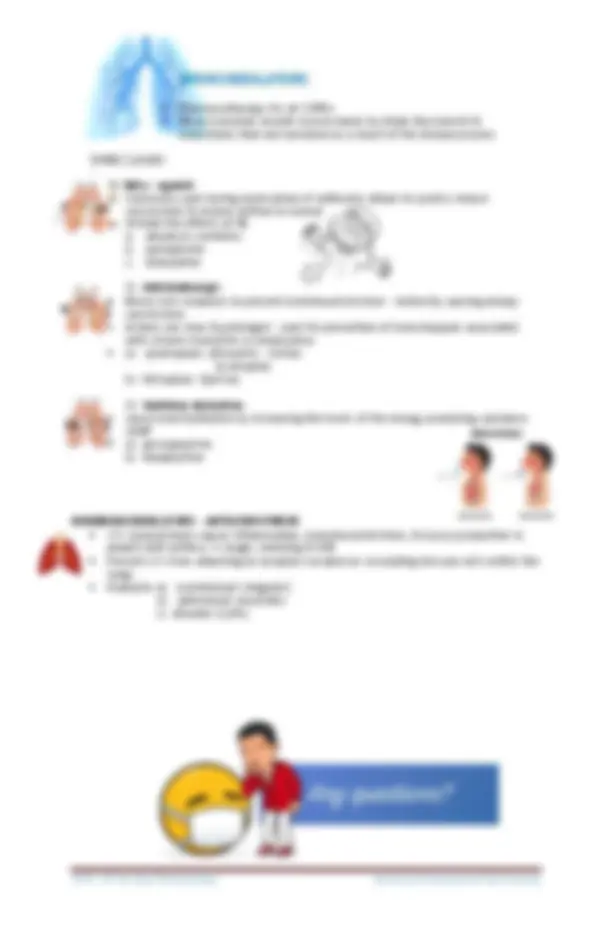



Study with the several resources on Docsity

Earn points by helping other students or get them with a premium plan


Prepare for your exams
Study with the several resources on Docsity

Earn points to download
Earn points by helping other students or get them with a premium plan
Community
Ask the community for help and clear up your study doubts
Discover the best universities in your country according to Docsity users
Free resources
Download our free guides on studying techniques, anxiety management strategies, and thesis advice from Docsity tutors
MODULE 3.0.1 - ANTI-INFECTIVE AGENTS
Typology: Lecture notes
1 / 3

This page cannot be seen from the preview
Don't miss anything!


A bodily substance that performs many functions: Nerve impulse transmission in the CNS Dilation of capillaries Contraction of smooth muscles Stimulation of gastric secretion Acceleration of HR Major inflammatory mediator of many allergic disorders eg. Allergic Rhinitis TWO types of cellular histamine receptors: a) H 1 receptors Mediate smooth muscle contraction Dilation of capillaries b) H 2 receptors Acceleration of HR Gastric acid secretion ANTIHISTAMINES Agents which do not affect the release of histamine but act primarily to block the action of histamine at it usual receptor site AKA histamine antagonists
REBOUND CONGESTION (topical)